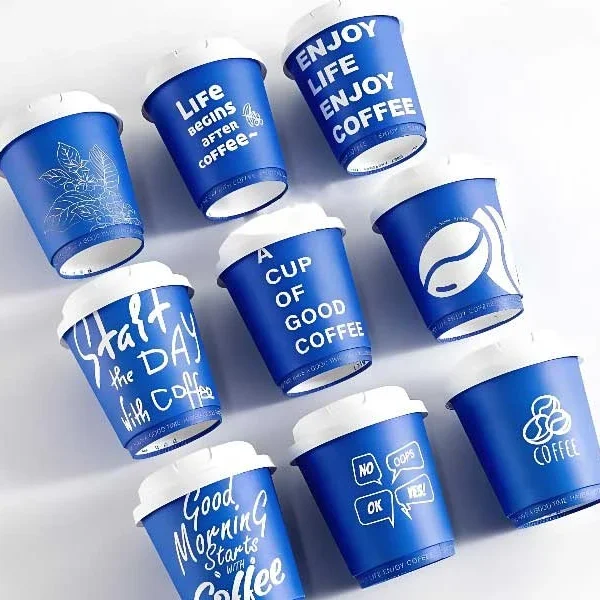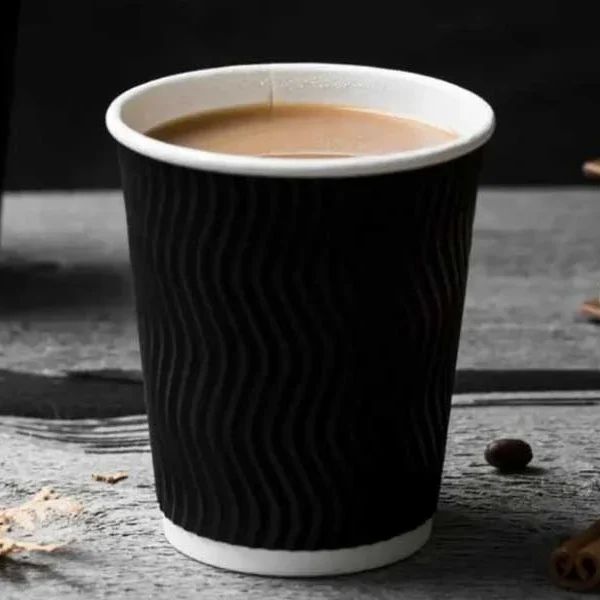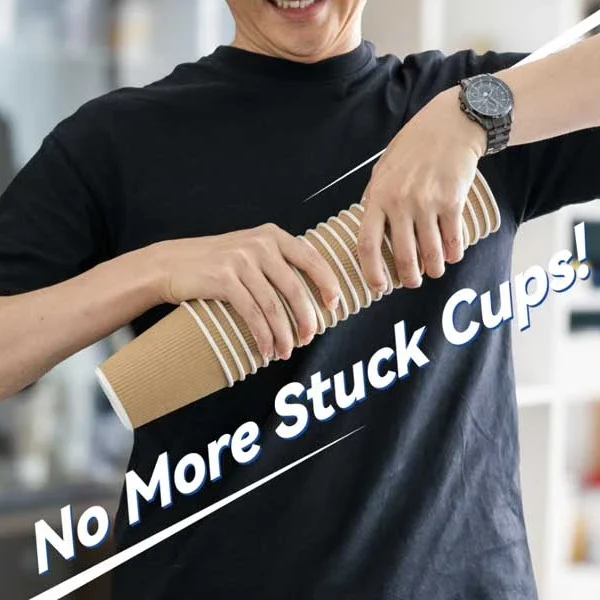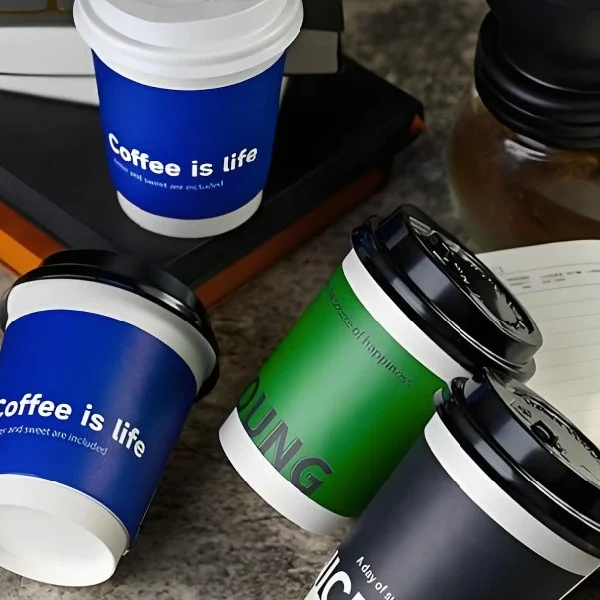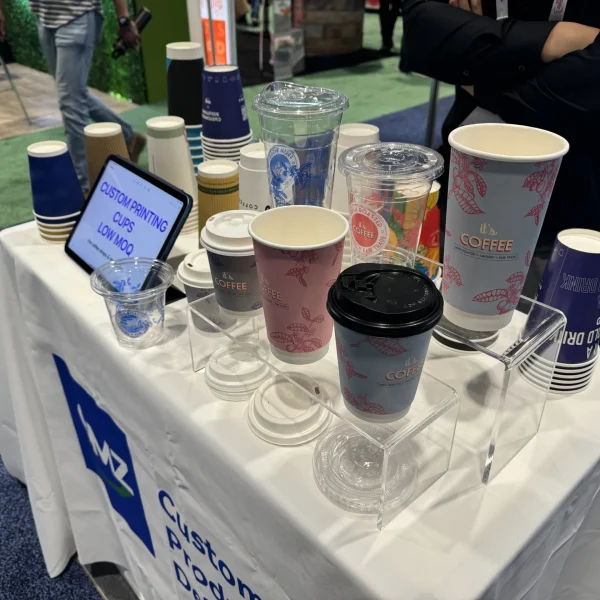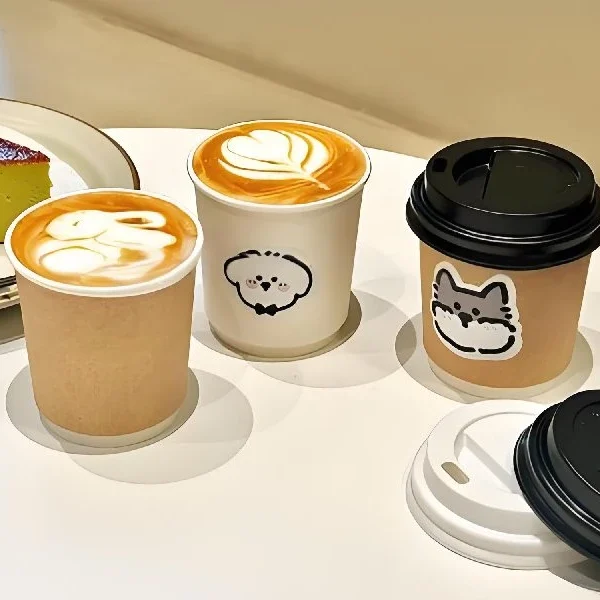When we talk about delivering hot food, the right packaging is crucial to ensure the food stays warm and delicious. This article explores various packaging options for hot food delivery, highlighting their advantages and disadvantages. From insulated bags to biodegradable containers, we will guide you in choosing the best hot food packaging that meets your needs and supports your business.
Key Takeaways
Choosing the right hot food packaging helps maintain food temperature and quality during delivery.
Consider eco-friendly options to reduce environmental impact while still providing effective insulation.
Evaluate the durability and cost-effectiveness of packaging materials to find the best fit for your business.
1. Insulated Delivery Bags

When it comes to delivering hot food, insulated delivery bags are a top choice for many restaurants. These bags are designed to keep food warm during transport, ensuring that your meal arrives at the right temperature. They work by trapping heat inside, which is essential for maintaining the quality of hot dishes.
One of the best features of insulated bags is their ability to control moisture. This means that your food won’t get soggy, which is a common problem with other types of packaging. Insulated bags are also lightweight and easy to carry, making them convenient for delivery drivers.
Insulated bags are a great investment for any food delivery service, as they help maintain the quality of the food while also being easy to use.
In terms of cost, insulated delivery bags can vary widely. Here’s a quick comparison of some common options:
Type of Insulated Bag | Average Cost | Heat Retention Time |
|---|---|---|
Basic Insulated Bag | $10 – $20 | 1 – 2 hours |
High-Quality Insulated Bag | $30 – $50 | 3 – 4 hours |
Custom Insulated Bag | $50+ | 4+ hours |
2. Foam Containers

Foam containers are a popular choice for hot food delivery, especially for items like soups and stews. They provide excellent insulation, keeping food warm during transport. Made from polystyrene foam, these containers are lightweight and sturdy, making them easy to handle. However, they are not the most environmentally friendly option, as they can take a long time to decompose in landfills.
When it comes to temperature limits, foam containers can typically handle food temperatures up to 175°F, but they are not suitable for boiling hot items. This makes them ideal for many hot dishes but not for everything.
Material | Temperature Limit | Common Uses | Eco-Friendliness |
|---|---|---|---|
Foam | Up to 175°F | Soups, stews | Not easily recyclable |
While foam containers are convenient and cost-effective, their environmental impact is a significant drawback. Many restaurants are now looking for alternatives that balance functionality with sustainability.
3. Aluminum Foil Wraps

Aluminum foil wraps are a popular choice for hot food delivery, and for good reason. They are excellent at retaining heat, making them ideal for keeping meals warm during transport. These wraps are lightweight and can easily conform to the shape of the food, ensuring a snug fit that helps prevent spills.
However, there are some concerns to consider. While aluminum is recyclable, the process of producing it can be harmful to the environment. Additionally, there are health concerns associated with aluminum, as it can leach into food, especially acidic items, causing serious health issues. This is something to keep in mind when choosing aluminum foil for your food packaging.
In terms of temperature limits, aluminum foil can withstand a range from -20°F to 400°F, making it versatile for various hot dishes. It’s commonly used in restaurants and catering services for its ability to keep food fresh and hot.
Aluminum foil wraps are a great option for hot food delivery, but it’s essential to be aware of their environmental impact and potential health risks.
4. Cardboard Takeout Boxes

Cardboard takeout boxes are a popular choice for hot food delivery, and for good reason. They are generally affordable and eco-friendly, making them a great option for many restaurants. These boxes are made from recycled materials, which means they are biodegradable and can be recycled again after use. This is a big plus for businesses looking to reduce their environmental impact.
However, there are some downsides to consider. While they are leak-proof, they can start to absorb moisture over time, which might make the food soggy if left too long. Additionally, the quality of cardboard can vary, and low-quality options may contain toxins that could leach into the food. Therefore, it’s essential to invest in high-quality cardboard containers to ensure safety and durability.
Pros | Cons |
|---|---|
Affordable and eco-friendly | Can absorb moisture over time |
Made from recycled materials | Quality can vary |
Biodegradable and recyclable | Low-quality options may contain toxins |
Cardboard takeout boxes are a versatile choice for many types of food, from pizza to salads. By investing in high-quality options, you can enhance your delivery service and keep your customers happy!
5. Plastic Clamshell Containers

Plastic clamshell containers are a popular choice for hot food delivery due to their durability and versatility. Made from materials like polypropylene (PP) and polyethylene terephthalate (PET), these containers can handle a variety of foods, from salads to pasta dishes. They are designed to be leak-proof, which is essential for preventing spills during transport.
One of the standout features of plastic clamshells is their ability to retain heat, making them ideal for hot meals. However, it’s important to note that while they are effective for many applications, they can also have downsides. For instance, lower-quality plastic can leach harmful chemicals into food when exposed to high temperatures.
Material Type | Temperature Limit | Common Uses | |
|---|---|---|---|
PET | Up to 120°F | Cold foods | Recyclable |
PP | -4°F to 266°F | Hot & cold foods | Recyclable |
PLA | Up to 140°F | Cold foods | Biodegradable |
While plastic clamshell containers are convenient, it’s crucial to choose high-quality options to ensure food safety and minimize environmental impact.
6. Biodegradable Containers

When it comes to packaging for hot food delivery, biodegradable containers are a fantastic choice for those looking to be more environmentally friendly. These containers are made from natural materials, which means they break down more easily than traditional plastics. This is a big win for our planet!
One of the most popular types of biodegradable containers is made from polylactic acid (PLA), which comes from renewable resources like corn starch. They are great for packaging cold foods, but they can also handle hot items up to a certain temperature. However, they can melt if left in a hot car, so keep that in mind!
Material Type | Temperature Limit | Eco-Friendliness | Common Uses |
|---|---|---|---|
Polylactic Acid (PLA) | Up to 140°F | Compostable | Cold foods, salads |
Molded Fiber | Up to 200°F | Compostable | Hot foods, takeout meals |
Cardboard | Varies | Biodegradable | Soups, sauces |
Biodegradable containers not only help reduce waste but also appeal to customers who care about the environment.
While these containers are a step in the right direction, they do have some downsides. For instance, they can be more expensive than traditional options, and not all biodegradable materials are created equal. Some may still contain harmful chemicals, so it’s essential to choose high-quality products. Overall, biodegradable containers are a great option for businesses looking to enhance their sustainability efforts while keeping food safe and warm during delivery.
7. Heat Retention Food Jars

Heat retention food jars are a fantastic option for keeping hot meals warm during delivery. These jars are designed to trap heat, ensuring that your food arrives at the perfect temperature. Made from materials that provide excellent insulation, they can keep food hot for several hours. This is especially beneficial for soups, stews, and other liquid-based dishes that customers love to enjoy hot.
One of the key advantages of heat retention food jars is their durability. They are often made from stainless steel or high-quality plastic, making them resistant to breakage. Additionally, many of these jars are designed to be leak-proof, which means you won’t have to worry about spills during transport.
Feature | Description |
|---|---|
Material | Stainless steel or high-quality plastic |
Insulation | Double-walled for maximum heat retention |
Leak-proof | Prevents spills during delivery |
Durability | Resistant to breakage and wear |
Versatility | Suitable for various types of hot food |
Using heat retention food jars not only enhances the customer experience but also reflects a commitment to quality. When customers receive their meals hot and fresh, it leaves a lasting impression that can lead to repeat business.
8. Vacuum-Sealed Bags

Vacuum-sealed bags are a fantastic option for keeping hot food fresh during delivery. They work by removing air from the package, which helps to prevent spoilage and maintain the food’s temperature. This method is especially useful for items like meats and cheeses, where freshness is key.
Pros
One of the biggest advantages of vacuum-sealed bags is their ability to extend the shelf life of food. By eliminating air, these bags help to keep food safe and tasty for longer periods. They also take up less space, making them easy to store and transport.
Cons
However, there are some downsides to consider. Vacuum-sealed bags can be more expensive than other packaging options, and they may not be suitable for all types of food. Additionally, if not sealed properly, they can lead to food spoilage.
Vacuum-sealed bags are a great choice for food delivery, but they require careful handling to ensure food safety.
9. Paper Food Wraps

Paper food wraps are lightweight and can easily conform to the shape of the food, making them a versatile choice for various dishes. One of the standout features of paper wraps is their eco-friendliness; they are often made from recycled materials and are fully biodegradable. This means they won’t linger in landfills for years, which is a big plus for environmentally conscious consumers.
However, it’s important to choose high-quality paper wraps. Some lower-end options may contain toxins that could leach into food, which is a significant concern. Additionally, while they are great for many types of food, they may not be the best choice for items with a lot of moisture, as they can become soggy and lose their structural integrity.
In terms of cost, paper wraps can be more expensive than traditional plastic options, but many businesses find that the benefits of using eco-friendly materials outweigh the extra expense. They also provide a unique opportunity for branding, as businesses can print their logos directly on the wraps, enhancing visibility and customer engagement.
Feature | Pros | Cons |
|---|---|---|
Eco-friendliness | Biodegradable and recyclable | Quality varies; some may contain toxins |
Versatility | Conforms to food shapes | Not ideal for very moist foods |
Branding opportunity | Custom printing available | Can be more expensive than plastic options |
Using paper food wraps not only helps in maintaining food integrity but also aligns with a growing demand for sustainable packaging solutions. GMZ offers a range of eco-friendly disposable paper supplies for restaurants, ensuring food integrity and customer satisfaction while preventing spills and maintaining freshness.
10. Thermal Food Carriers

When it comes to delivering hot meals, thermal food carriers are a fantastic choice. These containers are designed to keep food warm for extended periods, making them ideal for delivery services. They often come with insulation that helps maintain the right temperature, ensuring that your food arrives just as delicious as when it left the kitchen.
One of the key benefits of thermal food carriers is their ability to control moisture. This means that your food won’t become soggy during transit, which is a common issue with other types of packaging. They are also quite durable, making them suitable for various types of cuisine, from soups to casseroles.
Feature | Description |
|---|---|
Insulation | Keeps food hot for longer periods |
Moisture Control | Prevents sogginess in food |
Durability | Suitable for various food types |
Ease of Use | Often designed for easy transport and handling |
Thermal food carriers are not just about keeping food warm; they also enhance the overall delivery experience for customers.
Wrapping It Up: Choosing the Right Packaging for Hot Food Delivery
In conclusion, selecting the best packaging for hot food delivery is crucial for keeping your meals fresh and tasty. Each type of packaging, from styrofoam to biodegradable options, has its own set of advantages and disadvantages. It’s important to think about factors like heat retention, cost, and environmental impact when making your choice. Remember, good packaging not only protects the food but also helps your brand stand out. If you’re looking for eco-friendly options, consider companies like GMZ, which offer custom printed paper food boxes and cups. By choosing the right packaging, you can ensure that your customers enjoy their meals just as if they were dining in your restaurant.
Frequently Asked Questions
Insulated delivery bags are great for keeping hot food warm. They trap heat and keep the food at a good temperature until it reaches the customer.
Yes, biodegradable containers are eco-friendly and can hold hot food. They break down naturally, making them a good choice for the environment.
Choosing the right packaging ensures that the food stays hot, safe, and fresh. It also helps improve the customer’s experience and can support your brand’s image.

